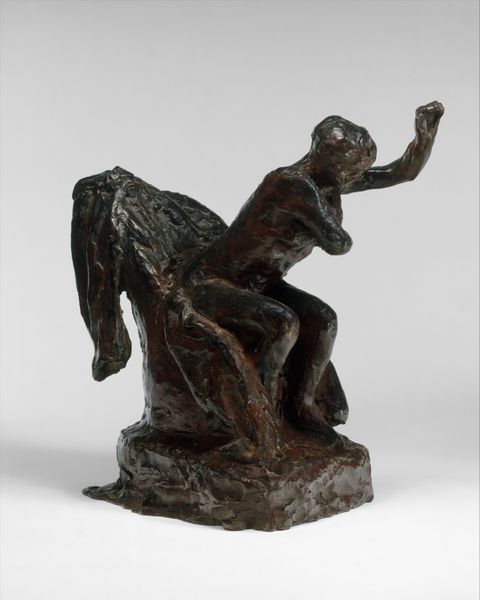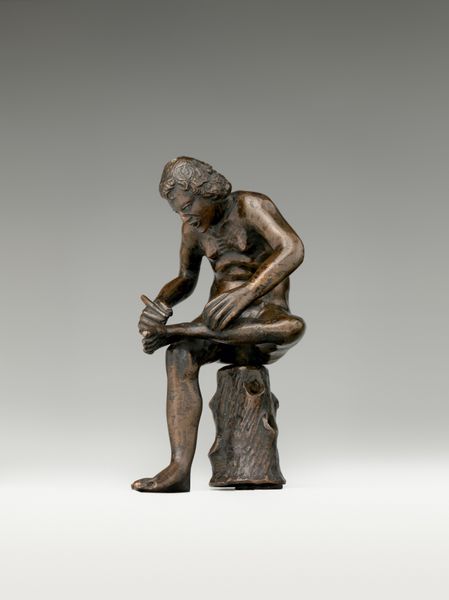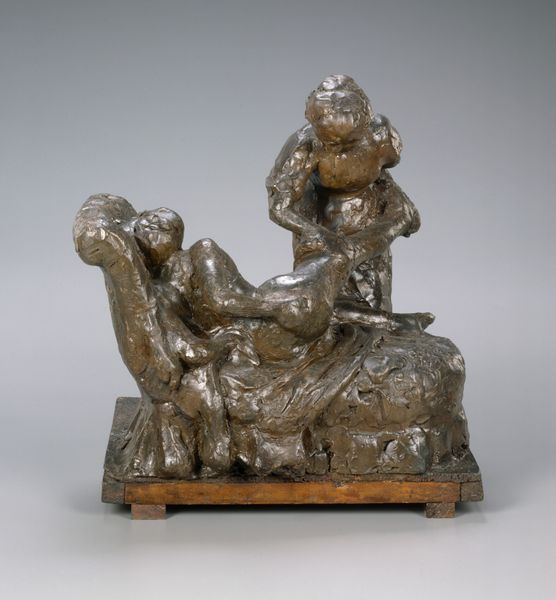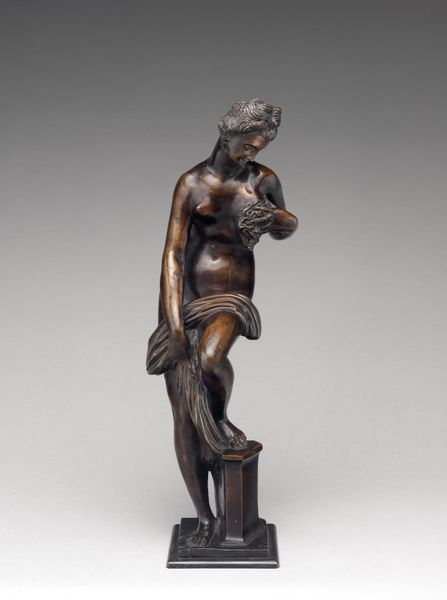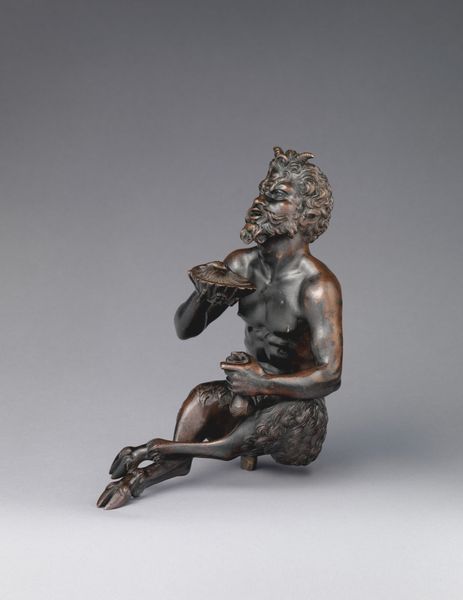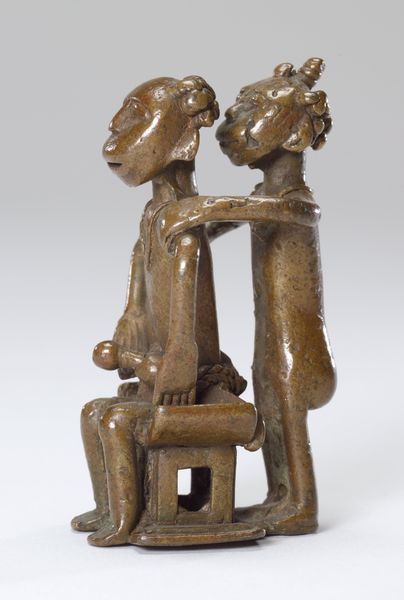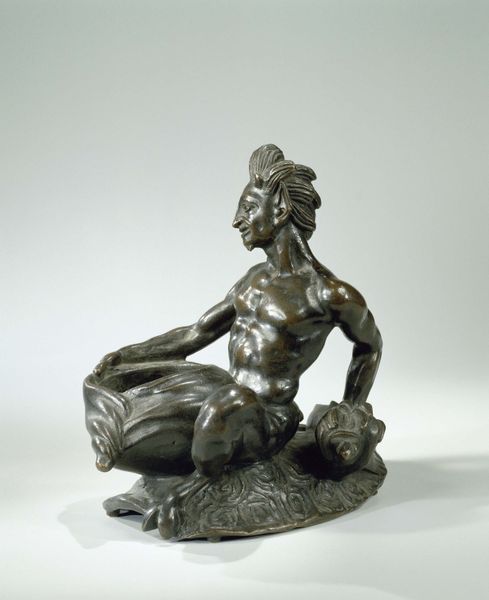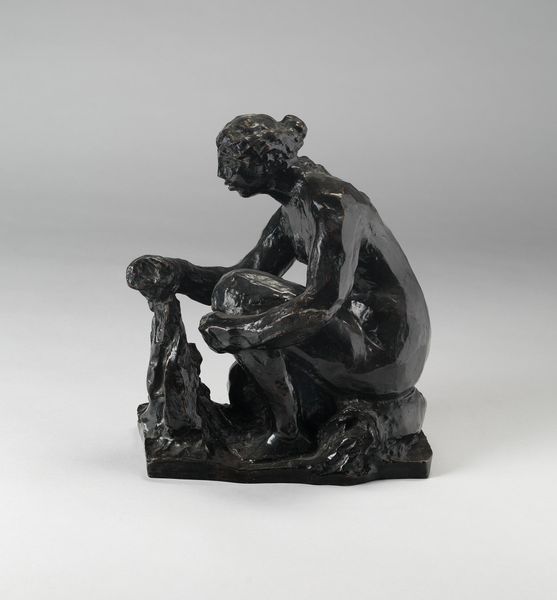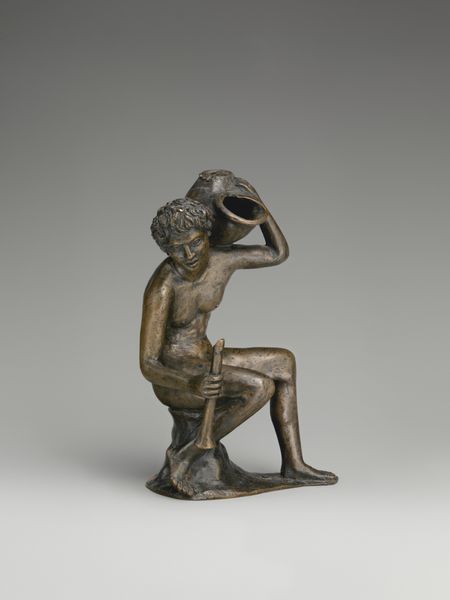
bronze, sculpture
#
allegory
#
sculpture
#
bronze
#
mannerism
#
figuration
#
sculpture
#
decorative-art
Dimensions: Overall (confirmed): 8 5/8 × 4 3/8 × 6 1/8 in. (21.9 × 11.1 × 15.6 cm)
Copyright: Public Domain
Curator: Welcome. Before us stands a bronze sculpture, dating from around 1532 to 1555. It’s titled "Triton and Nereid" and is attributed to Andrea Briosco, also known as Riccio. Editor: The bronze radiates an alluring, almost unsettling energy. The twisted forms and intense expressions strike me as distinctly Mannerist. Curator: Exactly. Note how Riccio manipulates classical forms into something far more complex and emotionally charged. Triton, a sea god, is often seen as a symbol of the power and mysteries of the ocean, carrying both promise and threat. The Nereid, a sea nymph, could represent beauty emerging from the depths, or perhaps the soul seeking union with nature. Editor: The base itself feels unstable, almost like the entire composition could topple. That coiled tail adds a disquieting tension; there’s no grounding in reality here, only restless movement. It cleverly violates expectations about how a sculpture ‘should’ sit. Curator: It reflects a departure from the Renaissance ideal of perfect balance and harmony. We are, after all, dealing with powerful elemental forces and ancient myths. Consider too the context—a time of religious and political upheaval. Such figures embody a turn towards subjectivity, towards interior psychological drama rather than outward stoicism. Editor: That makes perfect sense. Looking closely, the muscularity of the Triton is exaggerated, bordering on grotesque, yet he is inextricably bound to the Nereid's soft, vulnerable form. The contrasting textures add a level of complexity. Curator: I see those choices as speaking to the changing concepts of beauty in the 16th Century, and even reflecting humanist philosophical concepts circulating at that time. It asks the viewer to contemplate deeper questions. The figures lock into this intimate struggle. Riccio wasn't simply crafting a beautiful object, but engaging with the intellectual currents of his age. Editor: It all creates an artwork where you get this intricate game of gazes, directions, and that strong tactile nature, thanks to the bronze casting, and those figures seem eternally trapped between worlds. This piece resonates not as mere decoration, but as a visceral allegory of a specific cultural memory. Curator: In exploring these layers, one gains an entirely new understanding of this timeless creation. Editor: The piece leaves you wrestling with enduring questions about existence itself, doesn't it?
Comments
No comments
Be the first to comment and join the conversation on the ultimate creative platform.
